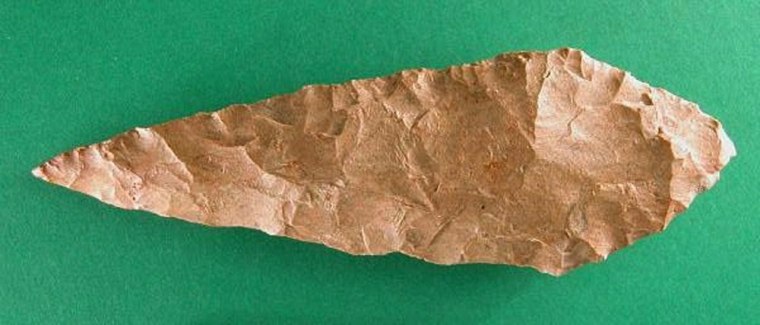Sophisticated methods of making sharp stone tools have been around a lot longer than archaeologists thought.
Researchers have found evidence of a technique called pressure flaking as much as 75,000 years ago at Blombos Cave in South Africa.
That's about 50,000 years earlier than previously thought, according to the report in Friday's edition of the journal Science.
"This finding is important because it shows that modern humans in South Africa had a sophisticated repertoire of tool-making techniques at a very early time," Paola Villa, a curator at the University of Colorado Museum of Natural History, said in a statement. "This innovation is a clear example of a tendency to develop new functional ideas and techniques widely viewed as symptomatic of advanced, or modern, behavior."
Villa explained that the method makes it easier to control the sharpness, thickness and overall shape of tools like spearheads and stone knives.
In pressure flaking, blades already shaped by blows from a hard stone hammer are finished with strikes by wood or bone hammers and carefully trimmed on the edges by directly pressing the point of a tool made of bone.
Other than jasper and some high-quality flint, most stone materials heed to be heated before they can be pressure flaked, Villa said.
The researchers were able to find evidence of heating microscopically. They analyzed 159 points and fragments, 179 other retouched pieces and more than 700 flakes from a layer in Blombos Cave dated to between 76,000 years ago and 72,000 years ago.
According to the researchers, at least half of the ancient, finished points at Blombos Cave were retouched by pressure flaking.
The research was supported by the Wenner-Gren Foundation, the University of the Witwatersrand in South Africa, the European Research Council, Norwegian Research Council and a PROTEA French-South Africa scientific exchange.
